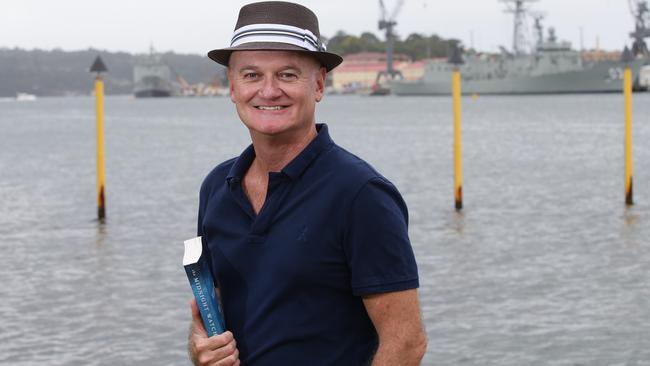David Dyer’s first novel is a Titanic tale of fact and fiction
IT was a line in his year four school project about the Titanic disaster that went on to inspire David Dyer’s first novel, The Midnight Watch.

Arts
Don't miss out on the headlines from Arts. Followed categories will be added to My News.
IT was a line in his year four school project about the Titanic disaster that went on to inspire David Dyer’s first novel. The then eight-year-old wrote how the captain of the steamship SS Californian, Stanley Lord, thought the distress rockets being launched from the flailing ocean liner marked a celebration, not a disaster.
Even at that early age, Dyer was fascinated by the biggest peacetime maritime disaster in which more than 1500 people lost their lives on April 14, 1912. But the story of the crew of the Californian, who saw the rockets launch from Titanic’s bow but failed to steam to her rescue, is almost as mesmerising as that of the Titanic.
Dyer’s novel, The Midnight Watch, follows the story of Captain Lord, his second officer Herbert Stone, and fictional reporter John Steadman, who strives to discover why these men saw Titanic’s distress rockets but did nothing to assist the passengers and crew.
“So much has been written about the Titanic and there’s very little left to uncover, but I have always been intrigued about the disaster and the story of the Californian in particular,” Dyer says. “I remember watching the film, A Night To Remember, with my grandmother when I was about four and being pretty much hooked from then.”

Milestones in Dyer’s life repeatedly refreshed his lifelong obsession with the Titanic.
He joined the Australian Merchant Navy soon after leaving school and later studied law. As a young lawyer, he found himself working for the London firm that represented The White Star Line, the owners of the Titanic, after the disaster.
In 2012, Dyer was a guest on the Centenary Cruise which retraced the maiden voyage of Titanic 100 years earlier, stopping at the wreck site to pay respects at the exact time the liner sank.
“It was while I was working in London that I found a book about the Californian,” Dyer recalls. “I became completely obsessed by that aspect of the story and I really wanted to find out why Lord didn’t go to the Titanic’s aid.”
Bit by bit Dyer began to uncover documents relating to the disaster and in particular, the Californian’s part in it. Over time, he travelled to Boston, London and Liverpool to find sources of information, and this became the basis for his novel, which ultimately took four years to research and write. But his research did not end with newspaper articles and documents.
One of the most moving parts of the book covers the loss of all 11 members of the Sage family, who were travelling in third class from England to the US to start a new life, and perished in the disaster. Dyer recreates their final moments in the icy cold waters of the Atlantic in a powerfully moving scene.
“I drew on my own experience of cold water training while I was at the Australian Maritime College and swimming in icy waters in Norway,” Dyer says.
“I know that when you first enter icy cold water it’s like a thousand knives piercing you at once, but if you stay in long enough, you go through the stages of hypothermia and start to feel a warmth, by which stage you’re near death.”
One of the biggest challenges Dyer faced was the melding of truth and fiction. Many of his characters, including Lord, Stone and the Sage family, are real people. But Steadman, is fictional.
All commentary about the inquiries into the disaster are taken verbatim from the
real-life files.
“The key challenge was how to manage the links between fact and fiction,” Dyer says. “With the key characters, I was faithful to everything I knew to be true about them but felt free to invent thoughts and conversations, but always from a basis of truth.”
The controversy surrounding the Californian continues today with plenty of supporters and detractors on
both sides.
“My own research tells me the Californian saw the Titanic and the facts tell us they did not go to her aid,” he says. “To me it’s conclusive.”
The Midnight Watch, Hamish Hamilton, $32.99 out now.



